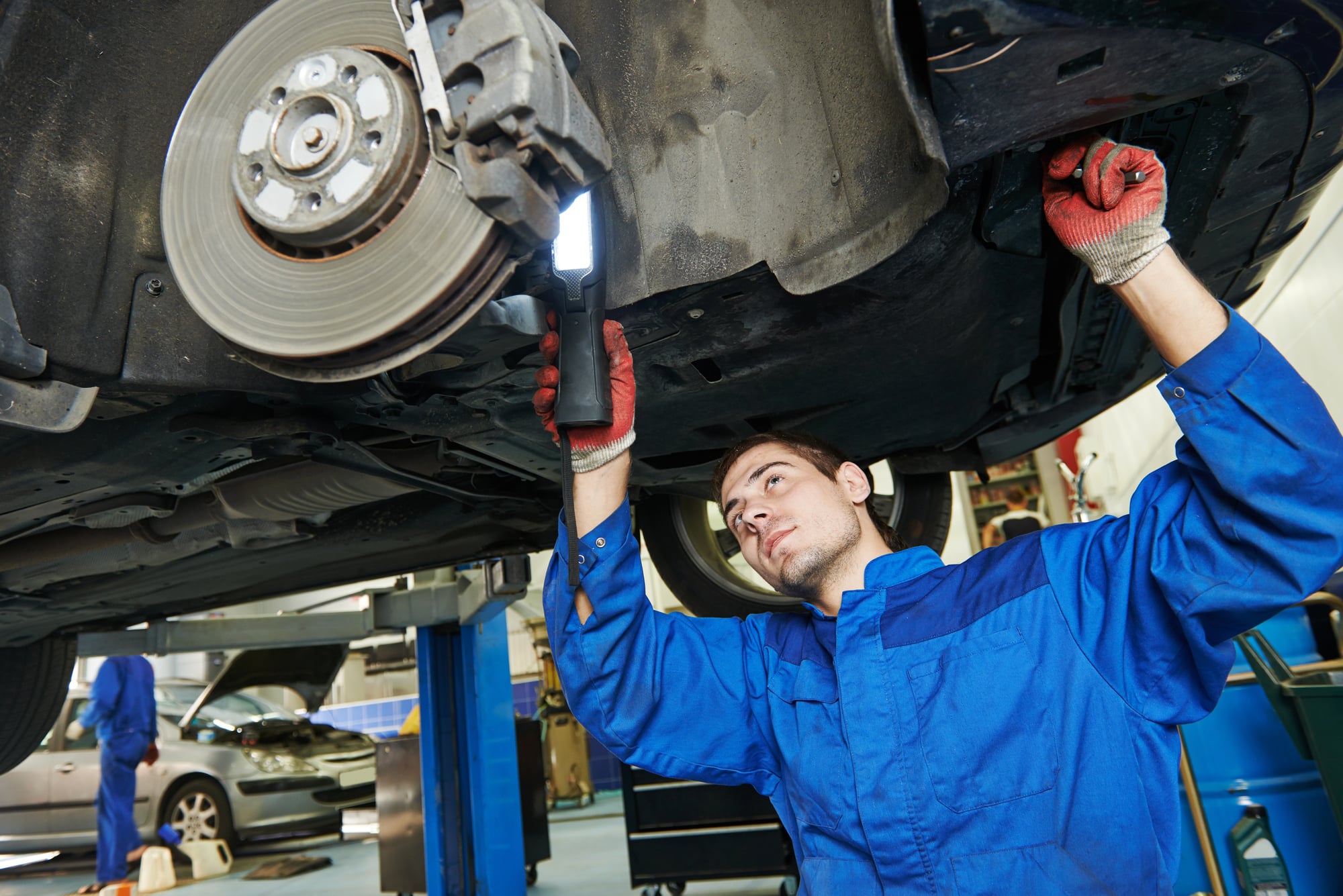Your car’s brakes are arguably the most critical safety feature of your vehicle, yet many drivers neglect proper brake maintenance until problems arise. Understanding how to care for your braking system doesn’t require advanced mechanical knowledge—just awareness of warning signs and commitment to regular upkeep. Whether you’re a seasoned driver or new to car ownership, maintaining your brakes properly can save you money, prevent accidents, and ensure your vehicle performs reliably for years to come.
At Pyle Automotive, we’ve seen countless drivers who could have avoided costly repairs and dangerous situations with simple preventive maintenance. The good news is that brake care is more straightforward than most people think, and recognizing the basics can make all the difference in your driving experience.
Recognizing the Warning Signs
Your brakes communicate with you long before they fail completely. The most obvious indicator is the high-pitched squealing sound that occurs when you apply the brakes. This noise comes from wear indicators built into brake pads, designed to alert you when replacement is needed. Ignoring this warning can lead to metal-on-metal grinding, which damages rotors and significantly increases repair costs.
Changes in how your brake pedal feels also signal maintenance needs. If the pedal feels spongy, travels closer to the floor than usual, or requires more pressure to stop effectively, your braking system needs attention. Vibrations through the steering wheel or brake pedal during braking often indicate warped rotors, another issue that worsens without prompt attention.
Visual inspection reveals additional clues about brake health. Dark, metallic brake dust accumulating on your wheels suggests excessive pad wear, while fluid leaks near the wheels may indicate problems with brake lines or calipers. At Pyle Automotive, we recommend drivers perform these simple visual checks monthly to catch issues early.
Understanding Brake System Components

brake replacement
Modern brake systems rely on several interconnected parts working together seamlessly. Brake pads create friction against rotors to slow your vehicle, while brake fluid transfers the force from your pedal to the wheels. Calipers house the pistons that push pads against rotors, and brake lines carry fluid throughout the system.
Each component has a different lifespan and maintenance schedule. Brake pads typically need replacement every 25,000 to 70,000 miles, depending on driving habits and pad material. Rotors last longer but may require resurfacing or replacement when they become warped or worn beyond specification. Brake fluid, often overlooked, should be flushed and replaced every two to three years, as it absorbs moisture over time and loses effectiveness.
The technicians at Pyle Automotive emphasize that understanding these components helps drivers make informed decisions about repairs and maintenance timing, preventing small issues from becoming major expenses.
Establishing a Maintenance Routine
Consistent brake maintenance starts with regular inspections every few months. Check brake fluid levels in the reservoir under the hood, ensuring the fluid appears clear or slightly yellow rather than dark or contaminated. Listen for unusual noises during normal driving and braking, and pay attention to how your vehicle feels when stopping.
Professional brake inspections should occur annually or every 12,000 miles, whichever comes first. During these inspections, qualified technicians measure pad thickness, check rotor condition, test brake fluid quality, and examine the entire system for leaks or wear. Pyle Automotive’s comprehensive brake inspections identify potential problems before they compromise safety or require expensive repairs.
Driving habits significantly impact brake longevity. Gradual, gentle braking reduces wear compared to sudden, hard stops. Maintaining proper following distances allows for smoother deceleration, while avoiding riding the brakes during downhill driving prevents overheating. These simple adjustments to your driving style can extend brake life considerably.
Professional vs. DIY Maintenance

brake replacement
While some brake maintenance tasks are suitable for DIY enthusiasts, others require professional expertise and specialized tools. Checking brake fluid levels, visual inspections, and monitoring for warning signs are tasks most drivers can handle safely. However, brake pad replacement, rotor work, and system bleeding require proper equipment and knowledge to perform safely.
The brake system’s critical role in vehicle safety makes professional service particularly important. Improper installation or maintenance can result in brake failure, putting you and others at serious risk. Pyle Automotive’s certified technicians have the training, tools, and experience necessary to ensure brake work meets safety standards and manufacturer specifications.
Keeping You Safe on the Road
Proper brake maintenance isn’t just about avoiding repair bills—it’s about protecting yourself, your passengers, and other drivers. Well-maintained brakes respond predictably and stop your vehicle effectively in emergency situations. Regular maintenance also prevents the inconvenience and expense of roadside breakdowns or being stranded with brake problems.
Taking a proactive approach to brake care ensures your vehicle remains reliable and safe. By establishing a routine maintenance schedule, recognizing warning signs early, and working with qualified professionals like those at Pyle Automotive, you can enjoy peace of mind knowing your brakes will perform when you need them most. Remember, brake maintenance is an investment in safety that pays dividends every time you drive.
Reach out to Pyle Automotive today by visiting our website or calling (801) 467-7455

